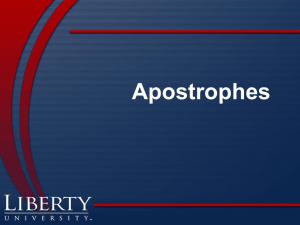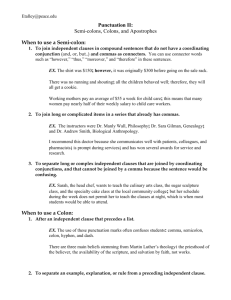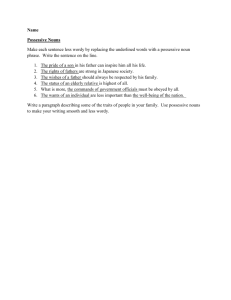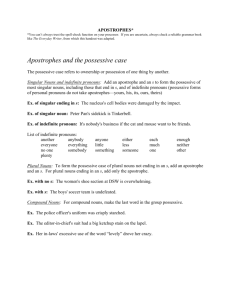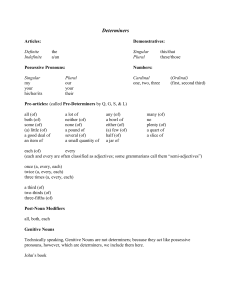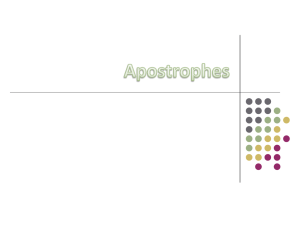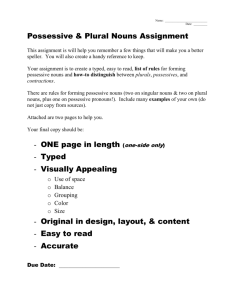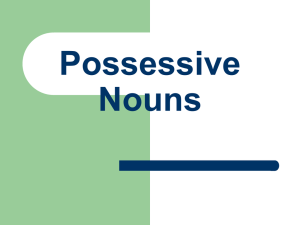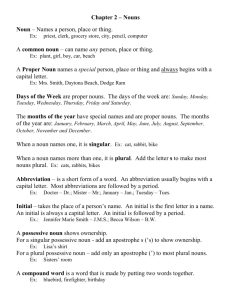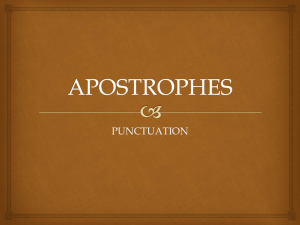Grammar 8: The Possessive Case and the Apostrophe
advertisement
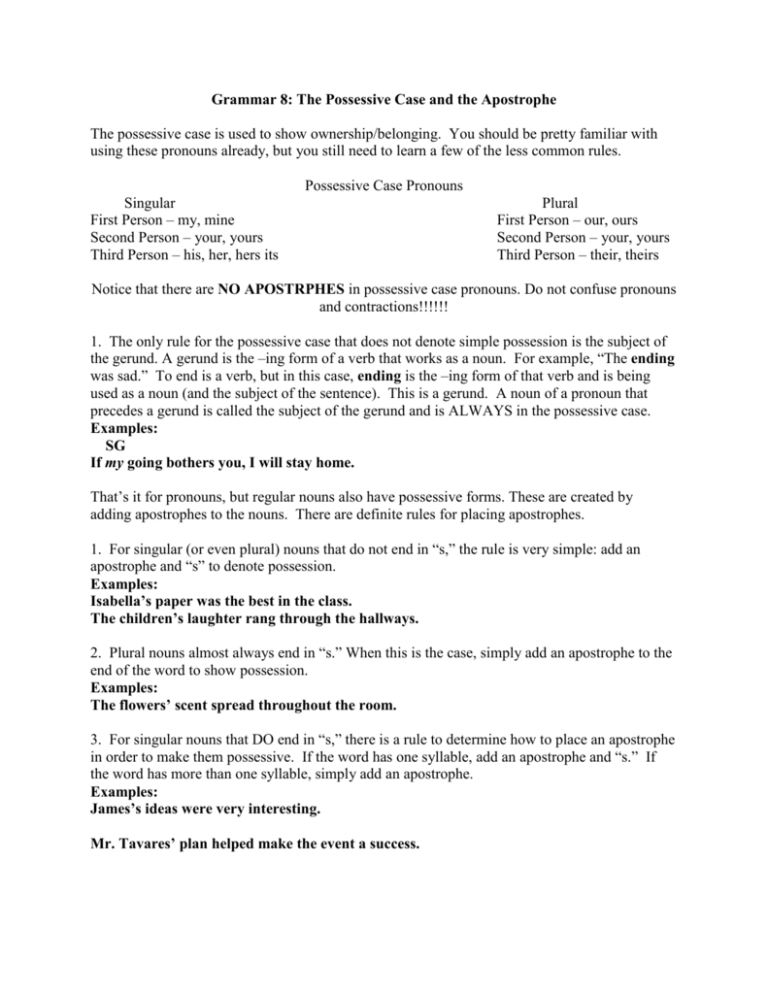
Grammar 8: The Possessive Case and the Apostrophe The possessive case is used to show ownership/belonging. You should be pretty familiar with using these pronouns already, but you still need to learn a few of the less common rules. Possessive Case Pronouns Singular First Person – my, mine Second Person – your, yours Third Person – his, her, hers its Plural First Person – our, ours Second Person – your, yours Third Person – their, theirs Notice that there are NO APOSTRPHES in possessive case pronouns. Do not confuse pronouns and contractions!!!!!! 1. The only rule for the possessive case that does not denote simple possession is the subject of the gerund. A gerund is the –ing form of a verb that works as a noun. For example, “The ending was sad.” To end is a verb, but in this case, ending is the –ing form of that verb and is being used as a noun (and the subject of the sentence). This is a gerund. A noun of a pronoun that precedes a gerund is called the subject of the gerund and is ALWAYS in the possessive case. Examples: SG If my going bothers you, I will stay home. That’s it for pronouns, but regular nouns also have possessive forms. These are created by adding apostrophes to the nouns. There are definite rules for placing apostrophes. 1. For singular (or even plural) nouns that do not end in “s,” the rule is very simple: add an apostrophe and “s” to denote possession. Examples: Isabella’s paper was the best in the class. The children’s laughter rang through the hallways. 2. Plural nouns almost always end in “s.” When this is the case, simply add an apostrophe to the end of the word to show possession. Examples: The flowers’ scent spread throughout the room. 3. For singular nouns that DO end in “s,” there is a rule to determine how to place an apostrophe in order to make them possessive. If the word has one syllable, add an apostrophe and “s.” If the word has more than one syllable, simply add an apostrophe. Examples: James’s ideas were very interesting. Mr. Tavares’ plan helped make the event a success. 4. There are different rules to indicate joint and individual possession when names are linked together with conjunctions. If a group owns something together, add the necessary apostrophes and “s’s” to the LAST noun in the list. In the case of individual ownership, add the necessary possessive accoutrements to each noun in the list. Examples: Joint possession – Ben and Jerry’s ice cream is tasty. Since both Ben and Jerry own the company together, only the last noun gets the apostrophe “s.” Individual possession – Plato’s and Socrates’ philosophies are still studied today. Since Plato and Socrates each have their own philosophies, they each get the possessive. 5. For compound nouns, the apostrophe and “s” are added to the last word. (Note: To form the plural of compound nouns, you must add the “s” to the first word, not the last: fathers-in-law.) Example: My father-in-law’s birthday is next week. Sidenote: Apostrophes are also used with certain unconventional plurals, namely letters and words used as words. Examples: The A’s and B’s on this test outnumbered the C’s and D’s. There are no if’s, and’s, or but’s about it. Numbers and dates, on the other hand, do not use apostrophes to form their plurals. Examples: The winning hand was a pair of 8s and 3s. The 1980s were rife with fashion faux pas.
